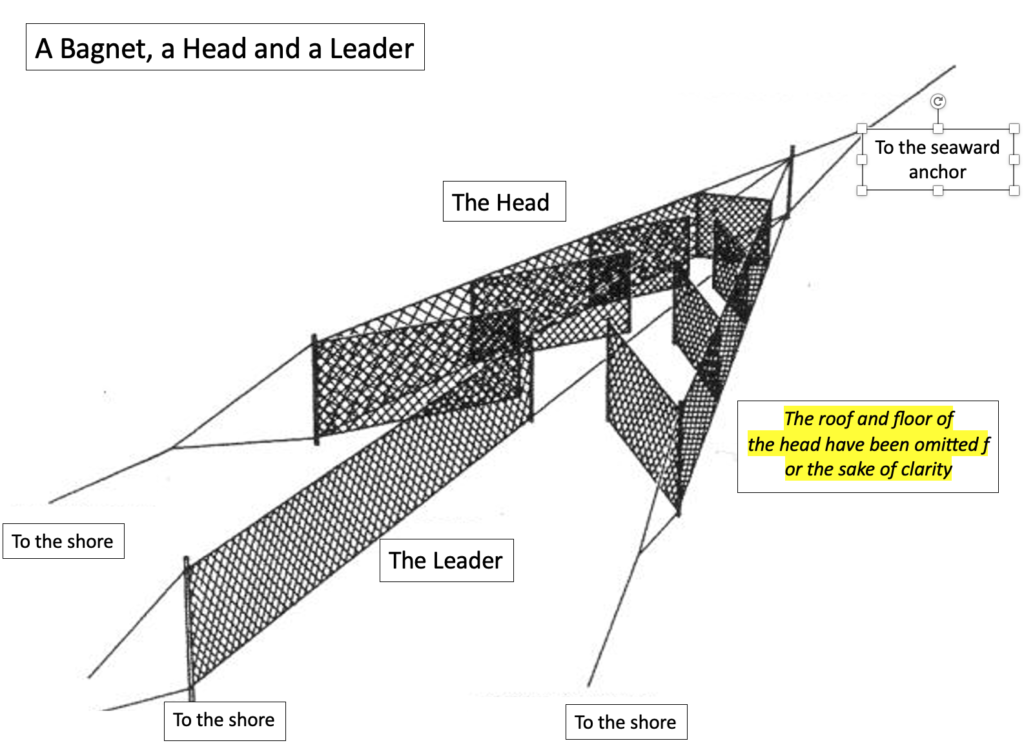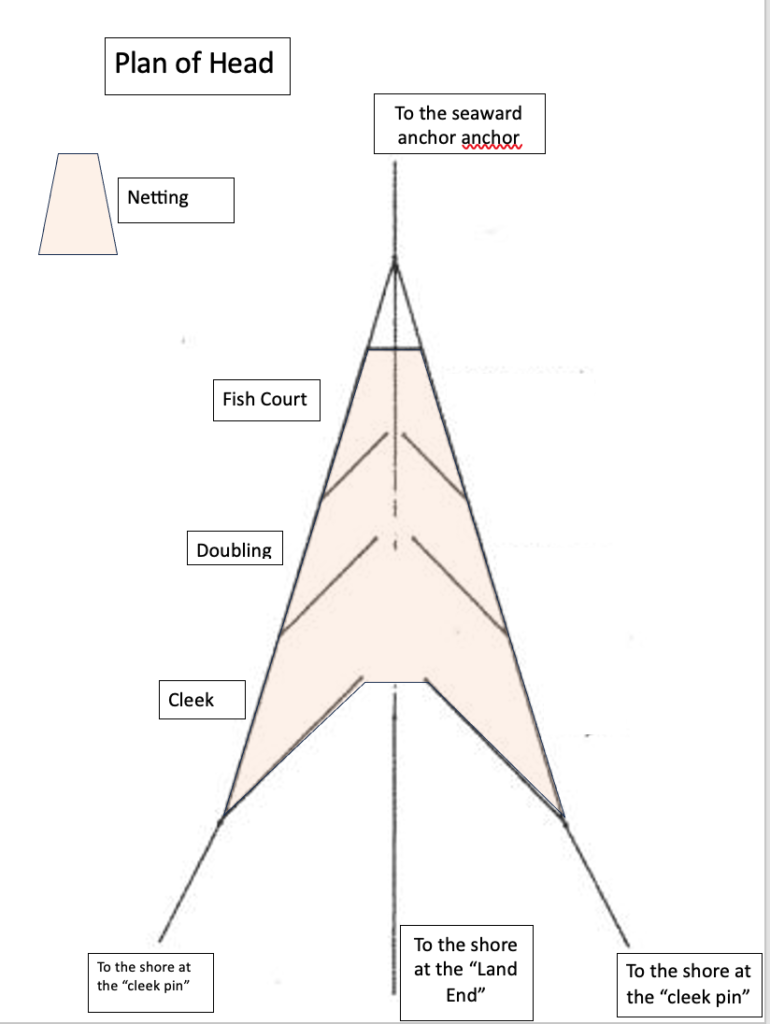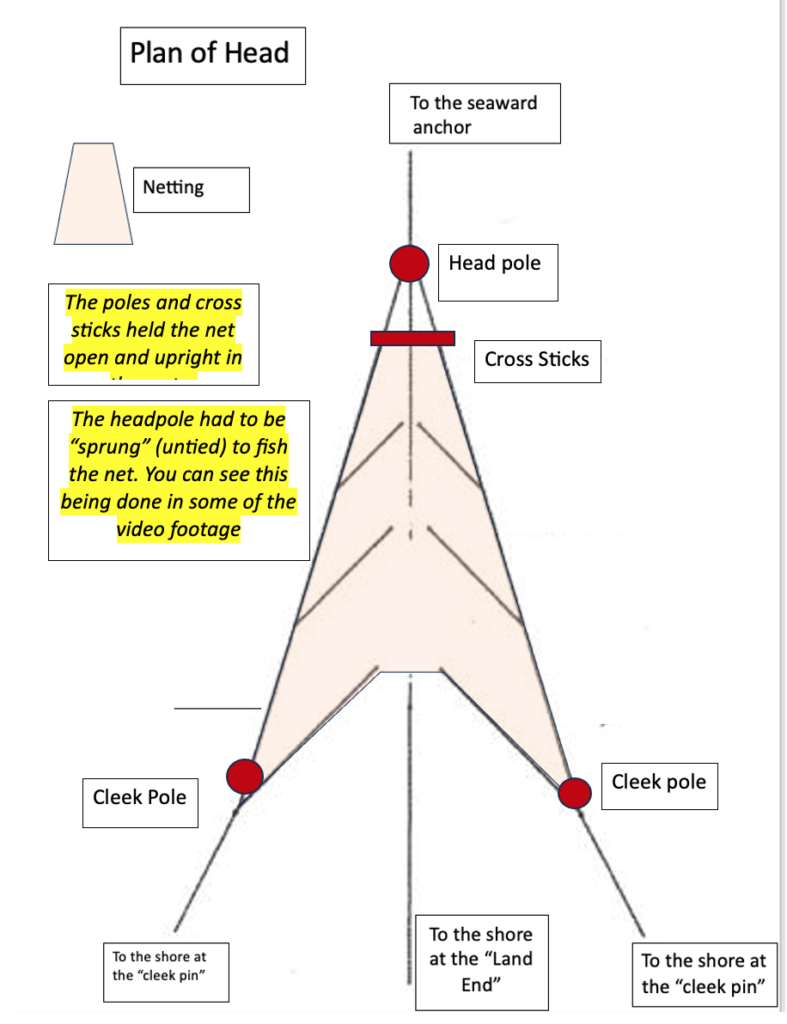The Nets, more detail
Bagnets hanging on the Kilchoan net green 1983
The nets
“A net is a collection of holes joined together by string”
“A net is a bundle of string carefully and evenly separated”
The term “net” when used in connection with salmon fishing can be confusing
In its broadest sense “a net” was a collection of equipment stretching from a place on the shore out to the anchor (see diagram 1, not ready yet). In this sense a net composed of shore chains, cables, the leader, the head, the mooring, buoys and anchor. In law this collection of equipment was referred to as a “fixed engine”. A more common term for the net would be a “bagnet”
Two of the major parts of the “net” were the “leader”, which was itself a net and the “head” which was another net. Confusing or what?

The Leader
The leader was a simple curtain of net about 100 metres long and 4 metres deep. It was made of heavy synthetic twine, usually gey or orange with a small, around 5 cm mesh size. The leader was meant to provide an obstruction visible to the fish.
The leader was attached to the shore at the “land end”. The point of attachment, called the “land end pin” was a steel fixing in the rock with a hole at the top through which a chain could be shackled
The closer the land end of the leader was to the shore the better: less chance for a fish to escape round the shore end, more chance that that fish would end up being caught
The leader ran from the land end into the middle of the head. Hopefully a fish that followed the leader into the head of the net would be unable to find it’s way out of the trap.
The Head

The head operated on the same principle as a lobster pot: the creature could get it but then was not be able to find its way out The head of a salmon net was a complicated box like structure of netting and wooden poles. The netting was arranged at angles that drew the fish deeper into the trap but the same angles also made it very difficult for the same fish to turn out of the trap. See diagram 3 below, not ready yet
Each part of the net had a name

The salmon fishing season in Ardnamurchan stretched from mid-May until almost the end of August. There was a net in the water for all of that time at each of the net positions. On the north coast up to six net positions, on the south coast up to five.
In later times the nets were constructed from “man made” fibres: plastics. Up until the 1970s the nets were made from much more traditional materials.
The mesh of the earlier nets were made from cotton twine, the ropes holding the nets together, the “bolt ropes” were made natural fibre rope, hemp or manila. These early nets had to be completely dried out before winter storage: there was a risk of rot if they were put away damp.
The whole structure, the leader and the head was held in place by three attachments to the shore and then held in tension and in the right position by a big anchor 200 metres to seaward of the head. The mooring, the long cable from the head out to the anchor had two big buoys near the head to keep the top of the net on the surface. See diagram 1
The anchors were heavy: it would take four men to carry them and between the anchor and the mooring cable there were 10 metres of heavy chain to help keep the whole thing in place
To get the net in position the salmon boat, called a coble, had to work herself right into the rocky shore to attach ropes and cables to the metal “pins” on the rocks. The leader was tied to the “land end pin” whilst other ropes, “cleeks” went to fixings positioned out wide to keep the net open. This could be a scary business along the exposed shores, particularly out towards the lighthouse. See diagram 1
There is very little evidence of the nets left to see. There are a few of the big net anchors lying around the peninsula .There were three metal pins on the shore for each net. The steel pins, each about 12cms high with a hole to take a shackle were drilled into the rocks. If you look very carefully along the tideline it is still possible to find the pins (link)

A net pin, highlighted with a bit of red string. Down amongst the barnacles at the “East Net” near Ockle
